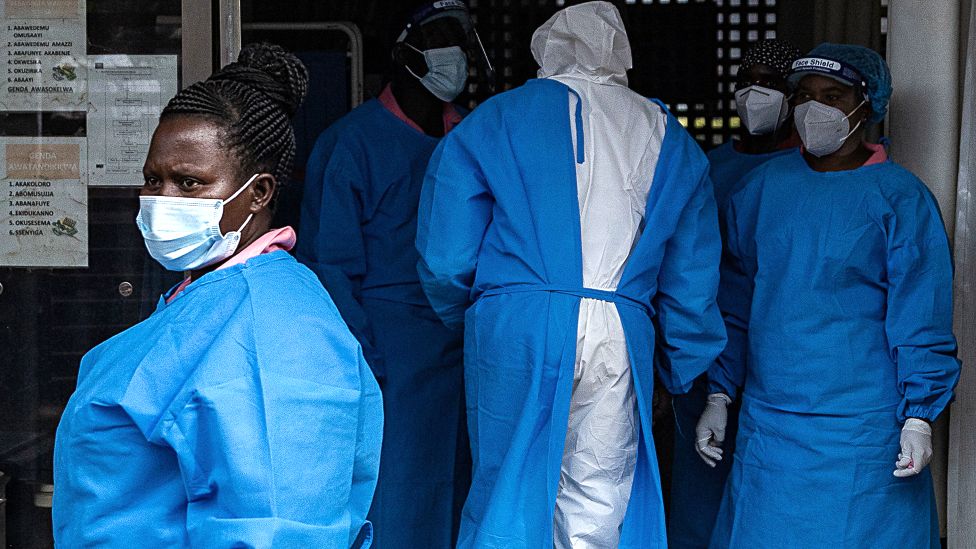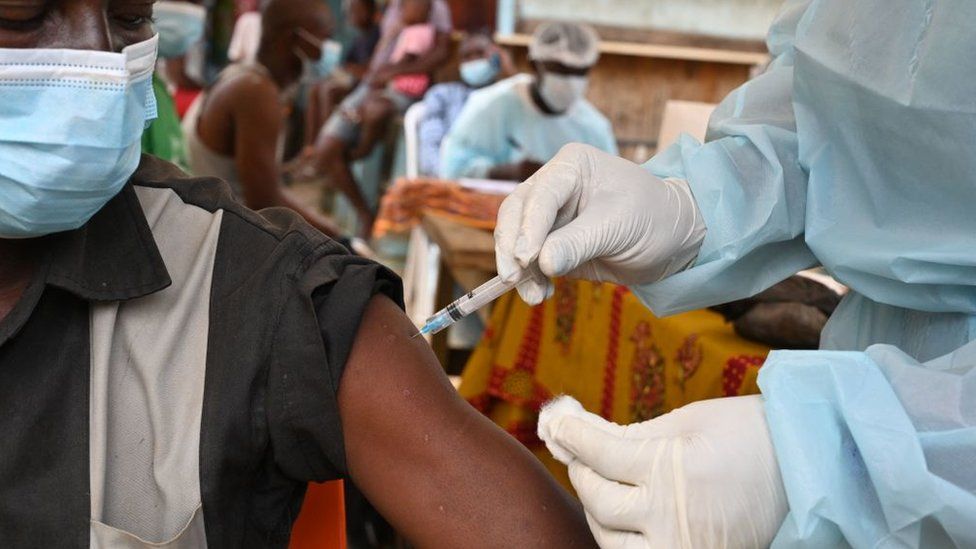


Brazil Sand Dune Dispute Members of the Indigenous community join Afro Brazilian community members in a protest march, in Salvador, Brazil, Sunday, Sept. 18, 2022. Protesters called on authorities to take action against projects that would have environmental impact on the dunes, including one to accommodate evangelical pilgrims congregating at the Abaete dune system, an area members of the Afro Brazilian faiths consider sacred. (AP Photo/Rodrigo Abd)More
DAVID BILLER
Wed, September 28, 2022 at 10:00 PM·7 min read
SALVADOR, Brazil (AP) — The vast blanket of white sand overlooking Salvador is a place to escape rumbling traffic, pinging phones and crying children. A space to find solitude and, increasingly, God.
Evangelicals have been converging on the massive Abaete dune system for some 25 years but especially lately, with thousands now coming each week to sing, pray and enter trancelike states. Some scrawl prayers on scraps of paper to be burned.
“I never tire of coming up here and glorifying,” said Deja Soares, 47, adding that she has seen the paralyzed walk and the blind see. “The things God does here are incredible.”
This year the dunes have become a flashpoint after City Hall began building a plaza and welcome center at one spot along their base, with a staircase up the sand soon to follow. A future phase would entail a platform atop the plateau. Defenders of the project say it’s necessary to protect the fragile dunes from the increasingly heavy foot traffic.
But it has come under fire from Afro Brazilian religious groups, who have been performing their own rituals in the dunes for generations, and protest what they see as elected officials abusing their power to coopt and Christianize yet another public space. They say their objections reflect evangelicals’ rising influence in the country’s halls of power and politics straining interreligious relations ahead of Oct. 2 general elections.
___
This is the second installment in The Associated Press' two-part package about the intersection of politics and religion in Brazil.
___
While Catholicism is still the largest religion in Brazil, in recent years it has slipped below 50% of the population to lose its status as a majority faith, and is projected to be overtaken by evangelical churches in a decade.
This year there are nearly 500 evangelical pastors running for state and federal legislatures, more than triple the number in 2014, according to data from political analyst Bruno Carazza. Sóstenes Cavalcante, leader of Congress' evangelical caucus, told AP he believes they can win a third of the Lower House’s seats, matching their share of the population.
Increased political power has, at times, altered the dynamics of public space nationwide, including in Bahia state, whose capital is Salvador.
One mayor in Bahia recently symbolically bestowed the key to the city on God and subjugated all other spiritual entities to Christ. Another in Salvador's metro region renamed a market “Jeová Jireh,” meaning “The Lord Will Provide,” and vendors selling specialized products to members of Afro Brazilian faiths were allegedly barred from obtaining stalls. Bahia’s state legislature was adorned with a 30-foot panel featuring a Bible and the ark of the covenant.
“There is a project to dispute territory and power that is already being executed,” said Lívia Sant’Anna Vaz, a state prosecutor focusing on human rights discrimination.
It was in that context that the dunes project was greenlit by an evangelical pastor who served as infrastructure secretary. Workers are toiling day and night to complete it this month.
On Sept. 18 roughly 200 evangelicals made a four-hour pilgrimage to the site, some barefoot as they traversed Salvador’s streets to arrive at the steep rise of sand they call the “Holy Mountain.”
Clad in flowy white garments, they faced the city and raised their hands as Bishop Wedson Tavares prayed for God to influence the election. With flags of Brazil and Israel in his shaking fists, he blessed elected officials from city councilors on up to President Jair Bolsonaro — a fervent supporter of evangelical interests — and pleaded for his reelection.
“Take the direction, in Jesus’ name, of this country, so your people can be happy!” the bishop said, kneeling with his eyes squeezed shut. “Because your word says that when the just govern, the people rejoice!”
Spectacles like that have Jaciara Ribeiro, a priestess of the Afro Brazilian Candomble faith, which has historically faced repression in Salvador, convinced that the public works project is a ploy for evangelicals' electoral support.
“It’s a political concession,” she said. “They are building as a function of partisan politics. Doing that ‘Holy Mountain’ is for the evangelical vote. That’s it.”
Previously she would climb that dune to retrieve barbatimão leaves for rituals honoring the deity Oxalá, but lately she has begun avoiding it. Members of her nearby temple have been insulted when walking past or had Bibles brandished at them, she said.
Roque Soares, director of an environmental nonprofit that helped develop the project, denied that politics are at play and said the aim is to keep the crowds from eroding the dunes and provide them with bathrooms.
The dunes are personal for Soares, who is also an evangelical pastor and a police detective. Decades ago he used to go there to smoke marijuana, sleep with women and hunt birds. After he converted, he said, it was there the Lord cured four hernias that doctors said would require surgery.
“I started coming to this place with another perspective, to seek out God’s presence,” said Soares, 53. “I found many different people from different denominations, different parts of our city and the interior of our state.”
The area affected by the project is only a tiny fraction of the vast dune system. Soares noted it didn't face opposition until an evangelical pastor and city councilman presented a bill to officially christen the location “Holy Mountain The Lord Will Provide.”
While backlash forced the withdrawal of that proposal, evangelicals still call the area “Holy Mountain” — as does the mayor. At a packed meeting inside Salvador’s convention center, he told hundreds of cheering Christians that he was building “Holy Mountain” so they can manifest their faith. Then a bishop from one of Brazil's largest evangelical churches called four legislative candidates onto the stage and asked the crowd to vote for them.
Amid the dispute, several “Holy Mountain” signs put up by Roque's nonprofit have been damaged, and some evangelicals accuse members of Afro Brazilian faiths of being responsible.
In mid-September, Ribeiro, who is known as Mother Jaciara of Oxum, received word that the federal public defenders’ office had sued to suspend the project. She took it as a sign the deity Oxum had heard their pleas, and she wanted to go there to celebrate. But she worried that members of her temple would be afraid to join, intimidated by the evangelical presence.
“They have an army of God. I’d like to have an army of Oxum,” she said with a wink.
Forces mustered soon enough, and practitioners of Afro Brazilian faiths gathered days later to protest the project and other measures seen as environmental aggressions against the dunes.
Dressed in white, they marched to Abaete Lagoon, the traditional site in the dunes for most for their rituals, and lined up along the water in a symbolic hug for the area.
From a sound truck, a Candomble priestess urged people to political action. Many wore stickers supporting left-wing legislative candidates, at least two of whom were present, and former President Luiz Inácio Lula da Silva, who is running against Bolsonaro.
Down the lagoon's shore, an evangelical pastor called three church members into the water to be baptized, plunging their heads beneath the surface and then hugging them tightly.
The pastor, Edy Santos, said afterward that he wasn’t bothered by the continuous drumming from the protest and that he refuses to talk politics with his flock, even when they ask.
“Our country is totally divided. It’s a division of thoughts,” said Santos, 32. “And the church came to unite.”
___
Associated Press religion coverage receives support through the AP’s collaboration with The Conversation US, with funding from Lilly Endowment Inc. The AP is solely responsible for this content.

































